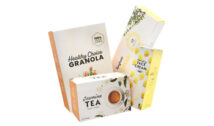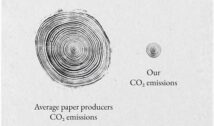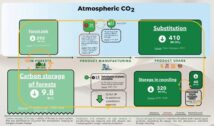
Like other sectors, paper and board is bouncing back from the economic downturn brought about by Covid–19. But new trends on how we use these materials, first exacerbated by the pandemic, are now looking like more profound changes in our consumption patterns. This has caused the industry to adjust its production, discontinuing lines and investing to adapt to the change. That’s the story told by preliminary statistics for the past year, published by the in– house statistics team of Cepi, the Confederation of European Paper Industries.
While consumption of paper products had decreased by 6.6% in 2020, the sector is now showing signs of a strong recovery, with consumption increasing by 5% over the past year in countries represented in the Confederation of European Paper Industries. Answering a renewed demand from clients both European and global, production rebounded by 5.8%. Exports outside of Cepi countries, which had gone down by 8.4% in 2020, are back to their 2019 level, driven by strong increases in sales on North and South American markets.
Beyond the effects of the global economic engine roaring back to life, other factors are coming into play. Covid–19 has caused a dramatic surge in online shopping, which has been a boon for producers of paper and board packaging.
The production of paper and board used for this purpose is estimated to have increased by 7.1% in 2021 when compared to 2020, and up from a 2.1% increase in 2019.
Combined to this is a new demand for our products’ encasings to be more sustainable, and the high recyclability of paper and board have contributed to the materials’ popularity amongst consumer–oriented shippers and transporters. Various sectors are now using paper and board packaging, notably as a solution for the delivery of food or medical and pharmaceutical supplies. Paper is also a staple for the hygiene industry and, while demand for paper for sanitary uses has somewhat decreased in 2021, it is still slightly above pre–pandemic consumption levels.
The overall production of ‘graphic grades’, paper used for printing, drawing and writing, has now registered a small increase, confirming some sub–sectors’ resilience in the midst of a structural decline. But demand for paper used in newsprint is still waning as a result of our ever–increasing reliance on screens for news consumption, with some producers still adjusting to this new reality.
Another set of statistics shows a more positive trend, and maybe an even deeper transformation. The production of wrapping grades – used for paper bag production, increased by a whopping 11.7%, benefitting from the EU–backed phase–out of plastic packaging. Production of paper for innovative uses, mainly for industrial purposes, increased by as much as 9.6%.
These figures, relating to both traditional and more innovative products from biorefineries, point towards what is known in the industry as the ‘substitution effect’. Paper and other forest–based products are set to progressively replace, to some extent, various less sustainable materials and chemicals. This is something the pulp and paper industry has pledged to support. Although these products still represent a marginal share of the overall production, Cepi statistics show that these changes are taking place rapidly and are even accelerating.

































